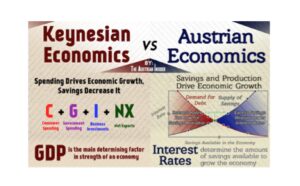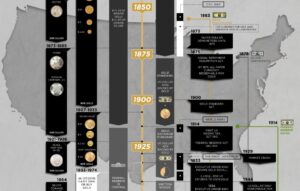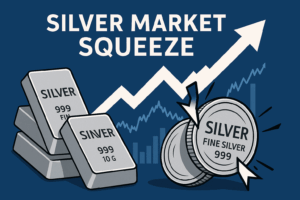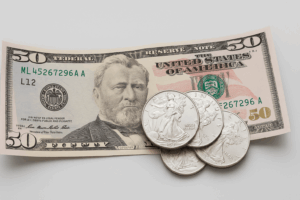The “London Fix” is issued by the London Bullion Market Association (LBMA). It is the way that global daily prices are set for precious metals including silver, platinum and palladium. But most importantly, gold.
The “London Fix Price” is an agreed-upon fair-value price for a precious metal based on current buying/selling interest at various prices and as agreed to by LBMA member banks; for gold it is set twice per day
These days, the London Fix Price is not nearly as important as it used to be, as all metals’ constantly changing spot prices (i.e. fair-value current prices) are easily accessible, second by second, on the internet
The London Fix Price is not something a novice investor need worry about, understand, or track. Buying through a reputable dealer like GoldSilver.com is all you need to do to make sure you’re buying metals at a fair price, close to a metal’s spot price, which is the fair-market price for a metal at any given moment
In the LBMA’s own words: “Internationally, bullion is traded on a 24-hour basis, mainly through London, in Over-the-Counter (OTC) transactions in spot, forwards and options. The gold price is set twice daily (at 10:30 and 15:00 London BST) in US dollars. The silver price is set daily at 12:00 (London BST time) in US dollars. The platinum and palladium prices are set twice daily at 09:45 and 14:00 (London BST) in US dollars per .9995 fine ounces.”
Exactly why gold prices are established in London — as opposed to other bullion centers like, say, New York or even Hong Kong — derives from London’s long and intimate historical involvement with the yellow metal.

Photo: Christoph Reiter
It began in the 17th century, as South American gold poured into the city. This led to the construction of the first purpose-built vault, a bullion warehouse from which the Bank of England served the whole European market, as it still does. Subsequent inflows from the US, Australia and South Africa solidified London’s position. Refineries close to the vault were set up to process the gold. And the Bank of England came to play the key role of custodian, regulator and facilitator of gold lending and selling by other banks. (As the LBMA’s website states: “The fact that London was at the center of international time zones has always facilitated it being the perfect place from which to operate the market.”)
By 1850, five private banks — N M Rothschild & Sons, Mocatta & Goldsmid, Pixley & Abell, Samuel Montagu & Co. and Sharps Wilkins — had banded together to oversee the operation of London’s gold market. The group had established “good delivery” accreditations (which ensured the quality and purity of gold bullion being traded) and maintained a list of acceptable melters and assayers. (In the 20th century, Sharps Wilkins was replaced by Johnson Matthey.)

Yes, the London Fix Price is set in London. No, not by the Queen. Photo: CityAM
The first gold price fix was set up by the five members at Rothschild’s offices in 1919.
That informal arrangement prevailed for nearly 70 years, until the founding of the LBMA in 1987. According to the organization’s website: “By the 1980s, the development of the market was such that the Bank of England recognized that the custody, maintenance and regulation of the Good Delivery List required an independent body.”
There was likely another factor, as well. President Ford’s 1975 lifting of the ban on private ownership of gold in the US drove an explosion of worldwide interest in this formerly quiet market. The London Fix assumed a much greater importance. And everyone suddenly wanted in.
As Tony Warwick-Ching wrote in his 1993 book, The International Gold Trade: “The LBMA was partly a response to a growing demand of concerns who were not members of the [gold] fixing for a greater involvement at the heart of the bullion market.”
By April 1988, there were 13 accredited “Market Maker” members who collectively created the daily Gold Fix. That number is the same today, although some of the names have changed (J Aron, for example, was acquired by Goldman Sachs). The current Market Makers as of 2019 are:
- Bank of China
- Bank of Communications
- Goldman Sachs International
- HSBC Bank USA NA
- Industrial and Commercial Bank of China (ICBC)
- INTL FCStone
- Jane Street Global Trading LLC
- JP Morgan Chase Bank N.A. London Branch
- Koch Supply and Trading LP
- Morgan Stanley
- Standard Chartered Bank
- The Bank of Nova Scotia (ScotiaMocatta)
- The Toronto Dominion Bank
Originally, the Fix was determined by a conference call among the participating Market Makers. The members would all state the prices at which they were prepared to buy or sell gold bullion — for themselves or their clients — on that day, and eventually a consensus would be reached.
It worked acceptably well for nearly 30 years. But over time, it ran afoul of modern suspicions. Too many people came to see the price fixers as a shadowy cabal, meeting in secret in a smoke-filled room (albeit virtual), with much too much potential for mischief.
So it all changed in 2015, when the Fix got anonymized and digitized. At that time, ICE Benchmark Administration (IBA) was named by the LBMA as the new gold price benchmark operator. Its mandate, in the words of the LBMA: “IBA host an electronic auction process for the LBMA Gold Price. The auction process is independently administered, tradeable, electronic and physically settled, conducted in dollars, with aggregated and anonymous bids and offers as well as being published on-screen and in real-time.”
According to its website, ICE (Intercontinental Exchange) “started out in 2000 with the idea of transforming the energy markets by creating an electronic marketplace that removed barriers and drove transparency and access.”
Fifteen years later, it landed the plum job.
How It Works

Image: WSJ
This, according to the LBMA, is how it works: “The chairperson sets the starting price and the price for each round in line with current market conditions and the activity in the auction. Participants then enter their buy and sell orders by volume (i.e. number of ounces). The price discovery process is in US Dollars but participants may, if they wish, request to settle in different currencies. If the net volume of all participants fall within the pre-determined tolerance at the end of a round (i.e. the imbalance is set at 10,000 oz.), the auction will be complete, with all volume tradeable at that price. (An auction can conclude with up to a 10,000 ounce difference between the entered buying and selling interest. This is referred to as the imbalance.) Netting of orders is processed automatically for participants with all house and client orders, plus any share of the imbalance, contributing to their final net volume. This net volume is then matched against other participants to produce trades with immediate trade confirmations.
“To ensure fairness the imbalance is shared out among the direct participants equally, irrespective of whether they entered interest into the auction or not. This is to ensure continuity of the existing process as well as certainty of the imbalance for direct participants.
“At the end of the auction process, IBA will publish the benchmark price. IBA will also publish a Transparency Report showing for each round: the price in USD; the aggregated bid and offer volume; the number of participants; and the timings for each round.”
And there you have the present-day London Price Fix. Just remember that it is only a reference point, fixed twice a day. What you’ll actually pay for an ounce of gold depends on a different number, the spot price…








